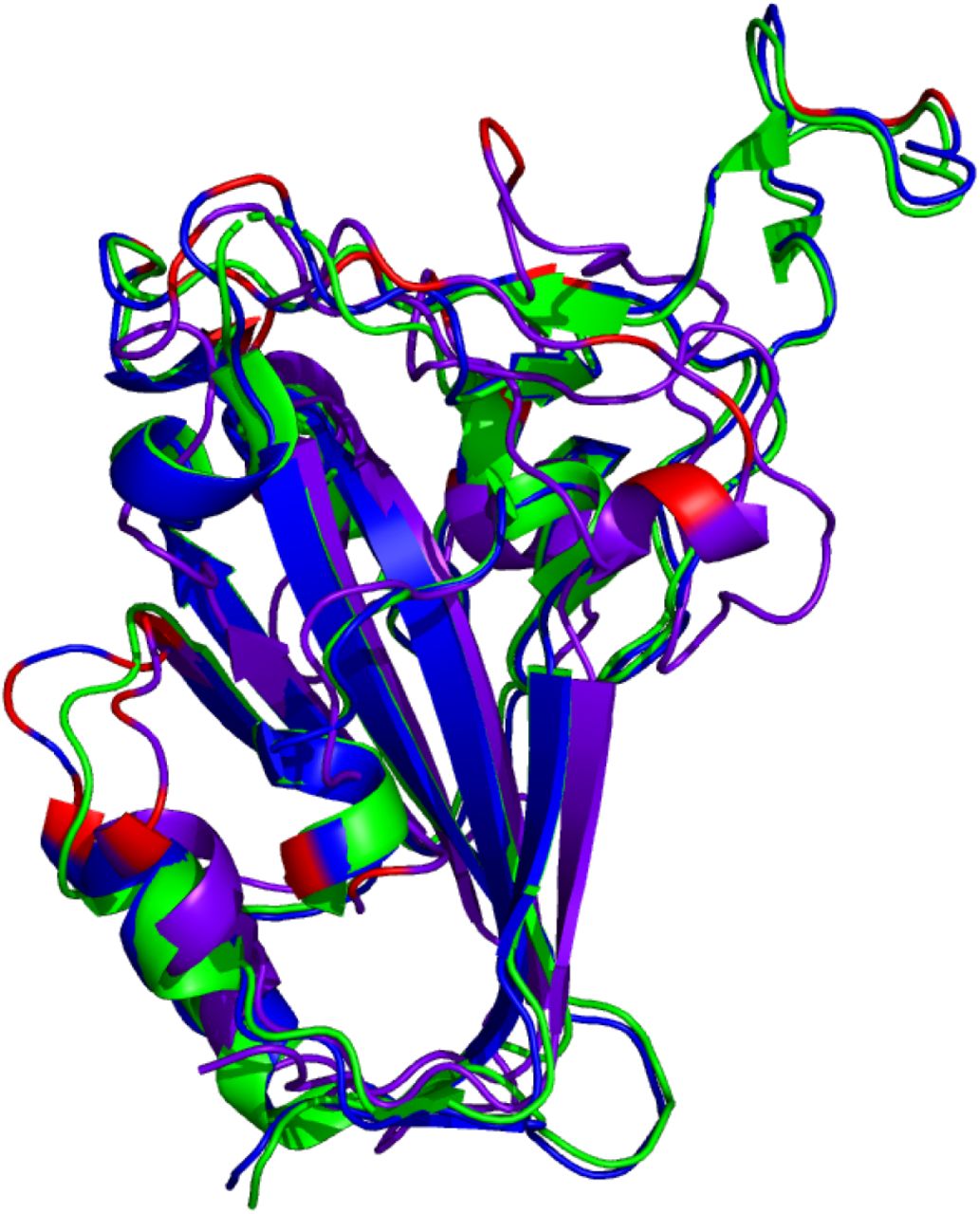AI predictions of Omicron predict the virus’ properties weeks earlier than in the lab
AI-driven structural predictions of Omicron predict the virus’ properties weeks earlier than in the lab

Ford et al.’s comparison of reference RBD structure (PDB: 6XC2, shown in green) and the predicted Omicron (B.1.1.529) RBD structures (AlphaFold2 shown in blue, RoseTTAFold shown in purple). Mutated residues are highlighted in red.
Professor Daniel A. Janies and Drs. Colby Ford and Denis Jacob Machado used free artificial intelligence (AI) software to try and predict the protein structure from the sequence of amino acids encoded in the genome of the SARS-CoV-2 Omicron variant and ask whether it could evade existing vaccines. On the same day that the WHO christened Omicron, Ford got his first results and quickly posted them online. Their paper was published today (Feb. 7, 2022) in the journal Frontiers in Virology (doi: 10.3389/fviro.2022.830202; click here). Also, Tom Simonite talked about their research and the free AI software that nearly predicted Omicron’s tricky structure in WIRED (click here).
AI predictions of Omicron predict the virus’ properties weeks earlier than in the lab